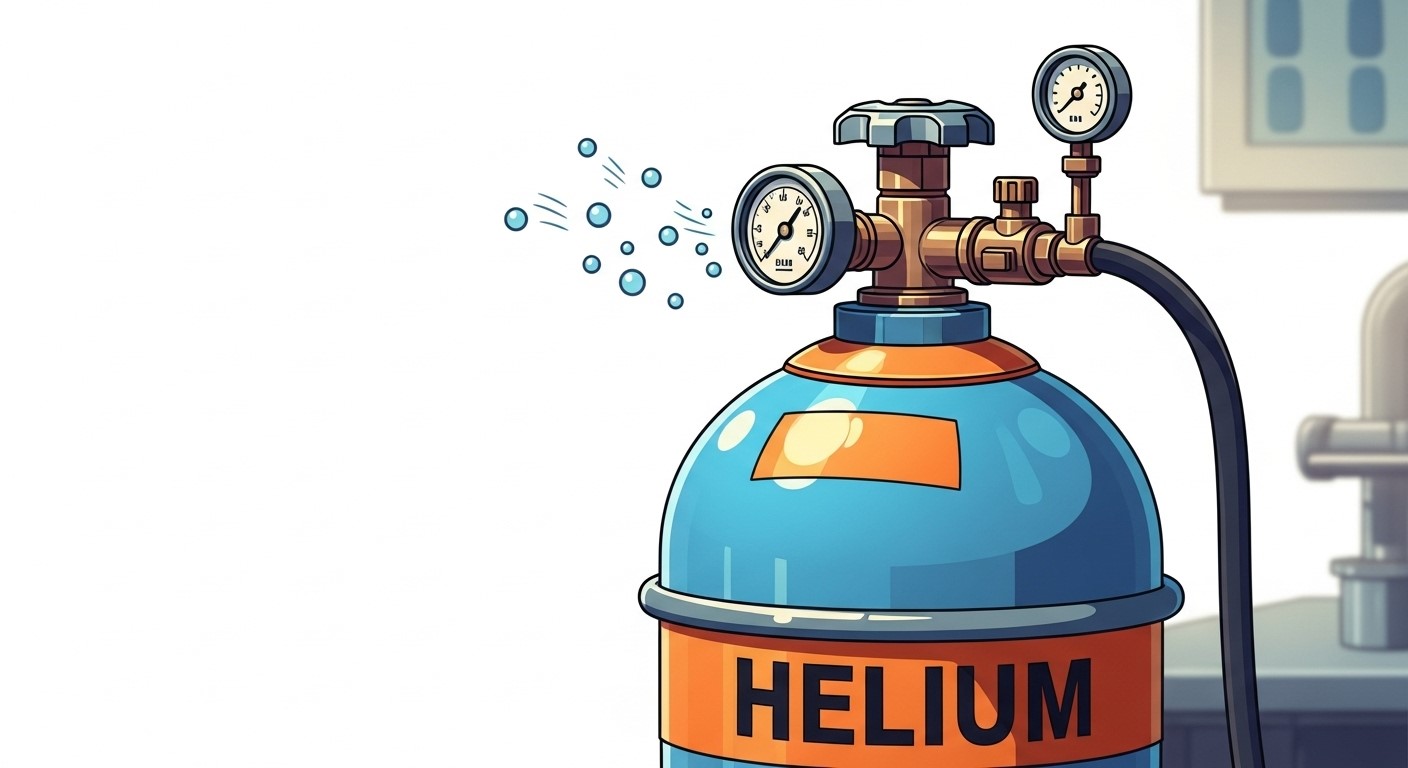Helium is one of the most unique and versatile gases in the periodic table. As the second lightest and second most abundant element in the universe, helium has played a vital role in numerous scientific, industrial, medical, and recreational applications. While many people know helium only as the gas that makes balloons float or voices squeaky, its commercial significance spans far beyond party décor.
In this article, we explore the wide-ranging helium gas applications and its importance in fields like aerospace, healthcare, welding, electronics, and more. We’ll also take a closer look at how mixtures such as oxygen helium are tailored for specific use cases.
What Makes Helium So Special?
Helium (He) is a noble gas—chemically inert, colorless, odorless, and non-toxic. It has the lowest boiling point of any element at -268.9°C, which makes it ideal for ultra-low-temperature applications. Its inertness means it doesn’t react with other elements easily, making it a perfect shielding gas in high-temperature environments or sensitive processes.
Key properties that make helium indispensable:
- Extremely low boiling point
- Low density
- Non-flammable
- Chemically inert
- High thermal conductivity
- High ionization potential
These characteristics underpin many of the helium gas applications across various industries.
Major Industrial Applications of Helium Gas
1. Cryogenics and Superconductivity
Helium is best known for its use in cryogenics. Liquid helium is crucial in cooling superconducting magnets, particularly in Magnetic Resonance Imaging (MRI) machines. Because no other gas can achieve such ultra-cold temperatures, helium remains the gold standard for cryogenic systems.
Hospitals and diagnostic centers depend heavily on helium-cooled MRI units for non-invasive imaging, making helium essential for modern healthcare.
2. Welding Shield Gas
In industrial welding, helium acts as a shielding gas, especially in high-precision methods like Gas Tungsten Arc Welding (GTAW or TIG). It creates a protective atmosphere around the welding arc, preventing oxidation and contamination.
Helium is particularly useful for:
- Welding stainless steel, aluminum, and copper
- High-heat input applications
- Thick material welds requiring deep penetration
Helium is often blended with argon or other gases depending on the desired arc characteristics.
3. Leak Detection
Because helium atoms are tiny and non-reactive, the gas is perfect for detecting micro-leaks in critical systems like fuel tanks, air conditioning units, and vacuum chambers. Helium mass spectrometry allows industries to detect even the smallest of leaks in real-time, preventing costly product failures or safety risks.
Aerospace and Defense Applications
4. Rocket Propulsion Systems
Helium is extensively used in the aerospace industry to pressurize and purge rocket fuel tanks, and to cool sensitive equipment. Because of its inertness and thermal stability, helium ensures safety in highly volatile propulsion systems.
5. Breathing Mixtures in Deep-Sea Diving
Deep-sea divers use breathing gas mixtures like oxygen helium, also known as heliox, to avoid nitrogen narcosis and oxygen toxicity during extended underwater missions. Helium replaces nitrogen in the breathing mixture, allowing for safer dives at extreme depths.
To learn more about this application, visit: oxygen helium
Electronics and Semiconductor Manufacturing
6. Semiconductor Fabrication
In chip-making processes, helium is used as a carrier gas and a cooling medium. During plasma etching and deposition processes, helium ensures precision and uniformity due to its thermal conductivity and inertness.
Semiconductor manufacturing is extremely sensitive to impurities. Helium helps maintain ultra-clean environments for wafer processing, which is critical in the production of microchips and integrated circuits.
7. Fiber Optic Cable Manufacturing
During the extrusion of fiber optic cables, helium is used to detect leaks in the cable sheath and maintain purity in the cable core. It ensures no moisture or contaminants interfere with the cable’s transmission performance.
Medical and Scientific Applications
8. Respiratory Treatments
Helium-oxygen mixtures (heliox) are also used in respiratory medicine to treat patients suffering from conditions like asthma, COPD, or upper airway obstructions. Heliox is less dense than air, allowing it to flow more easily through constricted airways, making breathing easier for patients.
9. NMR and Particle Accelerators
Just like in MRI, helium is used in Nuclear Magnetic Resonance (NMR) machines and particle accelerators to cool superconducting magnets. Research institutions, universities, and national laboratories rely on helium to support cutting-edge scientific exploration.
Other Uses of Helium
10. Lifting and Balloons
Of course, helium is commonly used to inflate party balloons, weather balloons, and airships. Its non-flammable nature makes it safer than hydrogen for lifting applications, although the lifting capacity is slightly less.
11. Helium in Entertainment and Marketing
Novelty balloons and advertising inflatables often use helium for display purposes. Despite the fun aspect, there are growing calls to use helium more responsibly due to its finite supply and critical industrial importance.
Environmental and Supply Considerations
Helium is primarily extracted as a byproduct of natural gas processing. It is a non-renewable resource, and its supply is concentrated in a few global locations. With helium reserves being finite and its usage increasing in high-tech sectors, conservation and recycling are becoming more important.
Industries are now:
- Investing in helium recovery systems
- Recycling helium from MRI and NMR machines
- Exploring helium alternatives where possible
Buying and Storing Helium Safely
Helium is stored in high-pressure cylinders and must be handled with care. It should be:
- Stored upright in ventilated areas
- Used with appropriate regulators and fittings
- Protected from extreme heat and impact
Ensure your supplier provides high-purity helium for specialized applications, especially in healthcare or electronics.
Conclusion
From lifting balloons to powering the future of medical diagnostics and semiconductors, helium is more than just a party gas. Its unmatched physical and chemical properties make it a cornerstone of modern technology and healthcare. As demand for clean energy, advanced electronics, and space exploration continues to rise, so too will the importance of helium.
Whether you’re a welding shop, hospital, semiconductor manufacturer, or research facility, understanding the scope of helium gas applications can help you make informed choices about its usage, procurement, and storage.
